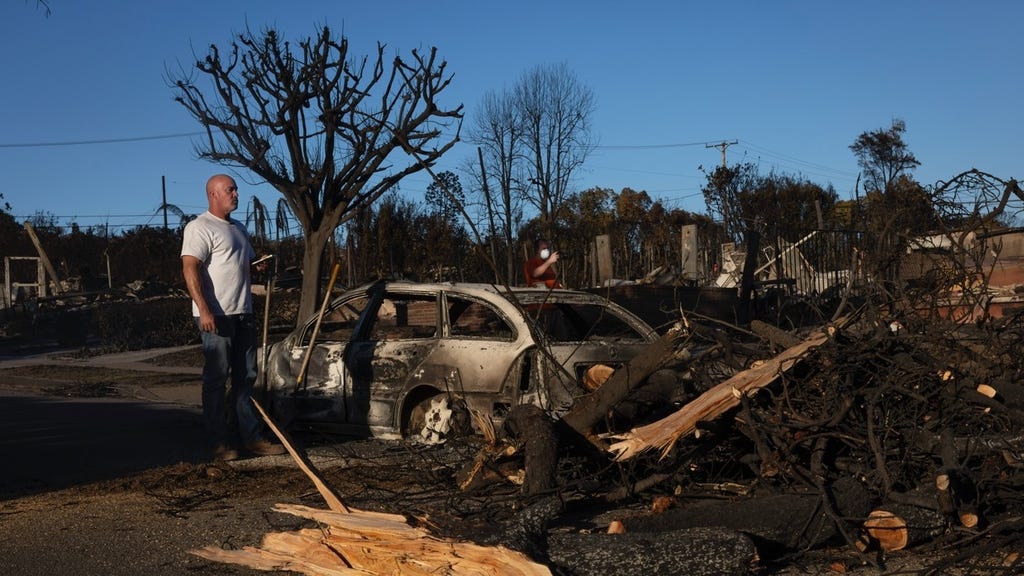The aftermath of a devastating fire in Los Angeles reveals a stark contrast: desolation amidst fervent reconstruction. Burned-out neighborhoods stand eerily silent, blocked off by authorities, with dangling power lines and fallen telephone poles marking the path of destruction. Yet, on Fiske Street in Pacific Palisades, a hive of activity defies the surrounding devastation. Chuck Hart, owner of Hart Built Construction, has preemptively begun the cleanup and demolition process, driven by a personal stake in the community and a pragmatic approach to rebuilding. His crew, temporarily housed in his own villa, works tirelessly to clear debris, embodying a resilient spirit focused on immediate action rather than dwelling on loss. This proactive approach mirrors the broader sentiment in the construction industry, eager to capitalize on the immense rebuilding opportunity.
Hart’s urgency to rebuild reflects a larger trend in Los Angeles – a rapid push for reconstruction fueled by economic incentives and a desire to return to normalcy. His dismissal of climate change as a significant factor in the fire highlights a disconnect between the immediate crisis and the long-term implications of a changing climate. While acknowledging the need for personal responsibility in fire preparedness, Hart’s focus remains squarely on rebuilding, with little consideration for adapting to the increasing risks posed by climate-related disasters. This attitude, though understandable in the face of personal loss, clashes with the warnings of experts who predict more frequent and intense fires in the future.
The governor’s decree, designed to expedite rebuilding by bypassing environmental regulations, further reinforces this focus on immediate recovery over long-term mitigation. While politically expedient and emotionally resonant with residents eager to rebuild their lives, the decision raises concerns about perpetuating a cycle of destruction and rebuilding. Professor Char Miller, an environmental historian, questions the wisdom of reconstructing in fire-prone areas without addressing the underlying issues that make them vulnerable. He advocates for a more sustainable approach, incorporating larger buffers between homes and nature, and stricter building codes to minimize fire risk. However, such measures seem unlikely in the current climate of urgency and the prevailing emphasis on rapid reconstruction.
The story of Steve Engel and his family exemplifies the complex emotional and financial calculus facing homeowners in fire-prone areas. While saddened by the loss of their home, they also recognize the substantial value of their land, prompting plans to rebuild with fire-resistant materials. This pragmatic approach, prioritizing property value and adapting to the new reality of increased fire risk, reflects a growing acceptance of living with the constant threat of wildfires. The Engels’ decision, like Hart’s rapid cleanup, underscores the resilience of Los Angeles residents and their determination to rebuild, even as the risks remain.
The contrast between the devastation and the frenetic pace of rebuilding highlights a central tension in Los Angeles: the desire to maintain a lifestyle deeply connected to nature despite the escalating risks posed by climate change. The rapid mobilization of resources and the streamlined evacuation process demonstrate a degree of adaptation to this new reality. However, the lack of meaningful discussion about long-term mitigation strategies suggests a deeper societal reluctance to confront the underlying causes of the increasing fire risk. The focus on rebuilding, fueled by economic incentives and a desire to return to normalcy, overshadows the need for a more sustainable approach to development in fire-prone areas.
The story of the Los Angeles fire aftermath presents a microcosm of the challenges faced by communities across the globe grappling with the impacts of climate change. The tension between immediate needs and long-term sustainability, the clash between economic incentives and environmental concerns, and the complex emotional responses to loss and rebuilding are all themes that resonate beyond the specific context of Los Angeles. The story underscores the need for a more nuanced and comprehensive approach to disaster recovery, one that balances the urgency of rebuilding with the imperative of mitigating future risks. The question remains whether Los Angeles, and other communities facing similar challenges, will learn from this experience and embrace a more sustainable path forward, or continue to rebuild in the face of escalating danger.














